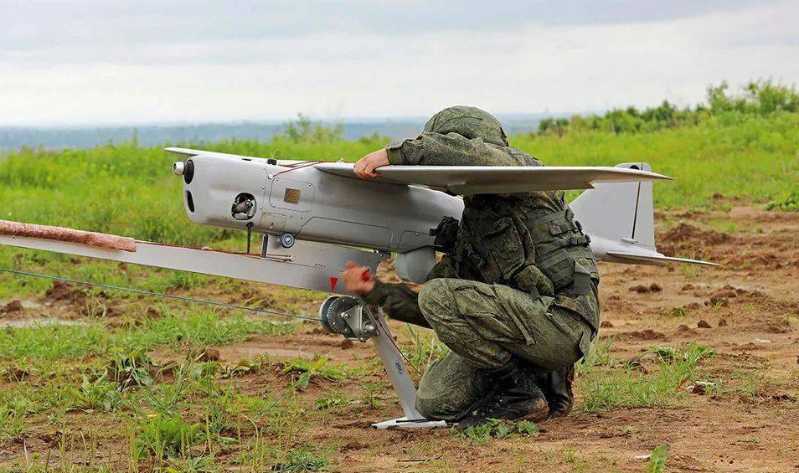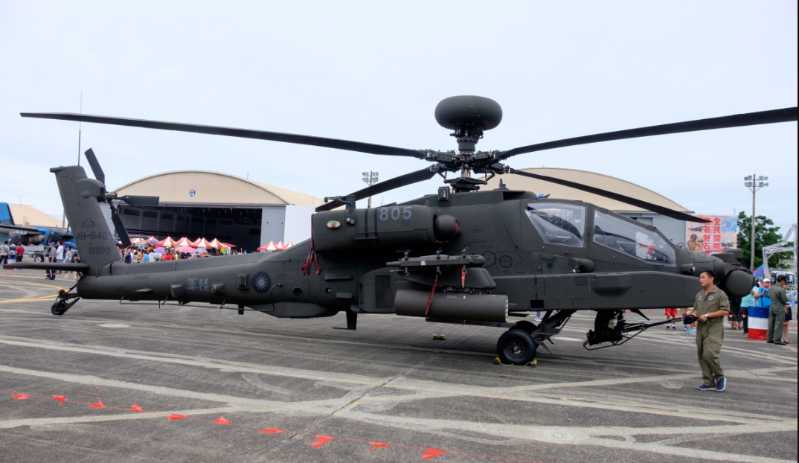Electronic warfare refers to the electronic reconnaissance and counter-reconnaissance, electronic interference and counter-interference, electronic deception and counter-deception, electronic stealth and counter-stealth, electronic destruction and counter-destruction and other combat operations taken by the hostile parties to compete for electromagnetic dominance.
Russia is building a "Digital Iron Dome" electronic defense network
In a local war under the conditions of informatization, digitization and intelligence, without electromagnetic dominance, there will be no land, sea and air dominance, and no battlefield initiative. Electronic warfare runs through the entire war.
On June 9, 1982, Israel dispatched unmanned aircraft to fly over the Syrian missile positions first, inducing the Syrian SAM-6 missile guidance radar to turn on, and immediately transmitted the intercepted radio signal to the E-2C "Hawkeye" early warning aircraft. The "Hawkeye" then transmitted the electronic information to the F-4 "Phantom" fighter and launched the "Shrike" anti-radiation missile, accurately destroying the SAM-6 guidance radar. Through only 6 minutes of attack, the 19 SAM missile positions that Syria and the Soviet Union had painstakingly managed were completely destroyed, creating a famous Bekaa Valley electronic warfare case of epoch-making significance in the history of air combat.
To this day, the painful lessons of the Bekaa Valley air battle are still fresh in the Russian Air Force’s memory, especially after the war, military experts organized to study and seriously learn from the lessons of Israeli drone electronic deception, develop new drones, and use unmanned electronic warfare aircraft to deal with drone electronic deception.
On January 26, 2016, the Russian army officially received a new type of drone that can replace mobile communication base stations. It can send text messages, audio, and short videos to users, and can also suppress remote control signals, deceive commands, fight for control, and guide its own firepower to attack enemy drone ground remote control stations.
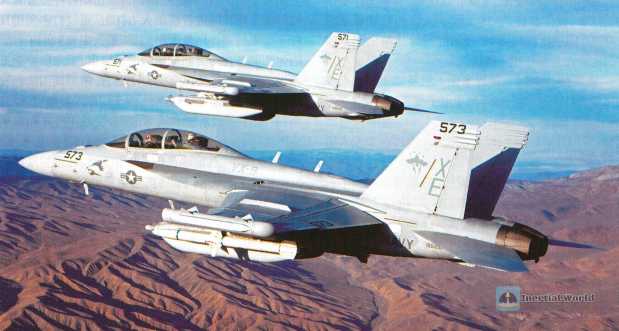
The Russian army has developed an electronic warfare system code-named "Rose Aviation" (abbreviated as "Rose"), which is transported to the battlefield where enemy drones are active through vehicle-mounted equipment such as military trucks. It can automatically identify the remote control signals of enemy drones from a large number of radio signals within a radius of about 10 kilometers around it, and then select the most appropriate type of clutter interference based on the key parameters of the signal, and suppress the remote control signals of enemy drones with powerful interference signals, making them unable to work normally. At the same time, the system can analyze the remote control signal parameters of the enemy drone and imitate the coding of such signals, and send a large number of false signals to the enemy drone. If the enemy drone cannot be controlled, "Rose" can also intercept the remote control signal, use a computer with powerful computing power to decipher the key parameters of its command password, and then block the connection between the drone and the remote control station, and use the remote control signal of "Rose" to break through the control system of the enemy drone itself. Experts from the Russian Ministry of Defense said that "Rose" can currently be used to detect and calibrate the firepower of the US military RQ-S "Hunter" drone, R Q-7 "Shadow" drone, R Q-11 "Raven" drone, etc.
Coincidentally, the website of "Russia Newspaper" recently reported that Russian experts have developed a compact electronic warfare system K-1000 FPV drone dome suppression system, which is specially used to protect armored vehicles operating in special military operations areas. At present, suicide drones pose a huge threat to tanks and armored vehicles on the front line, and tankers even have to install special metal parts on the turret to withstand the attack of enemy drones. In contrast, the electronic warfare system is more convenient and effective to use.
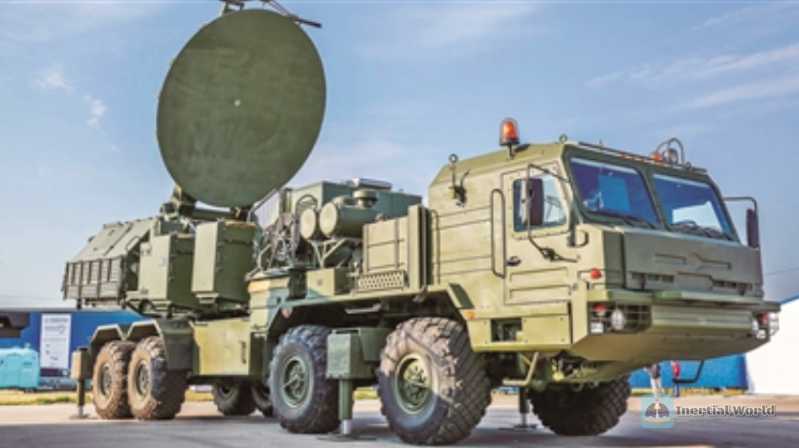
The K-1000 FPV drone dome suppression system is characterized by its small size, light weight and unusual appearance. It was developed by the Kaisant Scientific Production Association. Russian News Agency quoted the company’s R&D director Alyona Balandina as saying: "This electronic warfare system is shaped like a suitcase and weighs only two kilograms. It is very convenient to install and carry."
The new electronic warfare system can intercept multiple enemy drones within a radius of 250 meters and force them to land or fall. The product description states: "The K-1000 Dome Suppression System blocks UAVs by setting up high-powered omnidirectional jammers. The system is fully automated and can use either internal power or an external residential grid or portable generator." The product works by jamming the drone’s control and navigation frequencies, which causes the rotorcraft or drone to stop or gradually lower its altitude until it lands. In some cases, they can also fall out of control or turn back home (depending on the model and settings of the drone). The K-1000 system can block single or multiple drones, including drone swarms, as soon as it is activated.
The advantages of the K-1000 are: dual-band suppression, an effective operating radius of about 250 meters, easy operation, ergonomic design and light weight make the product easy to use. At the same time, the simple and rugged design allows even the most unfamiliar operators to use it in complex environments.
The RB-341V "Shoring"-3 radio electronic warfare system developed by the Russian army on the basis of the "Seahawk"-10 tactical drone is equipped with a special suppressor and a disposable jamming signal transmitter. Its main task is to suppress mobile communication base stations. Russian military experts believe that if the new drone can temporarily act as a base station, it can not only send information, but also fully control the user’s mobile phone, and even send videos through the browser. It can not only block enemy mobile phone communications, but also ensure that the phone of the party works normally. On December 29, 2016, the Russian army developed a "mosquito repellent" electronic warfare system that specifically interferes with and suppresses the communication channels of micro drones. When the enemy micro drone flies about 30 kilometers away, the system can interfere with its satellite navigation communication channel. When the remote control communication channel of the enemy drone is completely suppressed, the enemy aircraft will fail to move. In addition, the system can also use powerful jamming signals to make the ground control console of the enemy drone lose its electronic control ability, making these micro aircraft unable to perform tasks due to the loss of control signals. It is reported that a properly configured "mosquito repellent" system can protect the entire military base and airport from harassment by enemy micro-drone groups.
In the early days of the Ukrainian crisis, the Russian column entered Ukraine along multiple axes and was unable to send electronic warfare drones into the air, so it could only allow Ukrainian troops to intersperse and detour. The Ukrainian artillery units dispatched various types of drones to carry out precision fire strikes on Russian positions, maximizing their strategic role by striking key targets, thereby making the most of limited ammunition reserves to save the city of Kiev in the early stages of the conflict. Later, Russia began to seek electronic warfare advantages. On April 14, 2022, the Russian Ministry of Defense issued a notice stating that Russian troops equipped with the "Krasukha"-4S, "Murmansk" and "Moscow" electronic suppression systems completed the task of searching and identifying aerial objects (including unmanned reconnaissance aircraft and unmanned attack aircraft) and electronically suppressed the airborne radars of Ukrainian fighter jets. Under the influence of Russia’s improved electronic warfare capabilities, the Ukrainian Air Force is also under great pressure. Ukrainian fighter pilots were the first to feel the impact of Russia’s enhanced electronic warfare capabilities, often finding that their air-to-air and air-to-ground communications were interfered with, navigation equipment was suppressed, and radar failed.
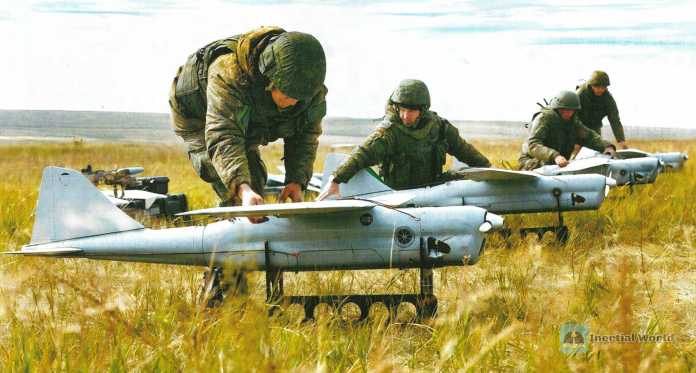
As the Ukrainian crisis gradually evolves into a war of attrition, Russia’s electronic warfare is gaining an advantage. The Russian electronic warfare system covers all known radio frequency bands, and an important electronic warfare system is deployed every 10 kilometers on the front line. Among them, "Krasukha-4" and "Resident" are considered to be one of the most powerful electronic warfare systems at present, and are indispensable and sophisticated equipment for the Russian army’s electronic warfare attacks.
Among them, the "Krasuha-4" electronic warfare system is 9.86 meters long, 4 meters high, and 2.78 meters wide. It uses the KAMAZ-6350 off-road chassis, has strong off-road mobility, and is powered by a KAMAZ-740.50.360 turbocharged diesel engine with a power of 360 horsepower, a highway speed of 90 kilometers per hour, and a maximum range of 1,000 kilometers. A complete set of "Krasuha-4" system consists of a vehicle equipped with an electronic warfare system and a vehicle equipped with a command and control module, which are respectively used for loading, transmitting, receiving, and controlling. The system can simultaneously track up to 80 airborne radiation sources and control 6 different types of jammers. "Krasuha-4" is mainly used to interfere with the entire US E-3 and other S-band radar systems. It is used to detect and interfere with large radar equipment. In theory, it can even be used to interfere with early warning aircraft and satellites. Its effective range is about 300 kilometers. It is mainly used to suppress and counter early warning aircraft, drones, ground radars, reconnaissance satellites and other air-to-ground detection systems, so that missiles cannot launch attacks according to radar instructions. In actual combat, "Krasuha-4" was deployed at the Russian Khmeimim Air Base in Syria. During this period, it successfully blocked dozens of attacks by anti-government armed forces and helped the Russian side destroy more than 230 anti-government armed drones, suicide drones, reconnaissance drones, micro drones, etc.
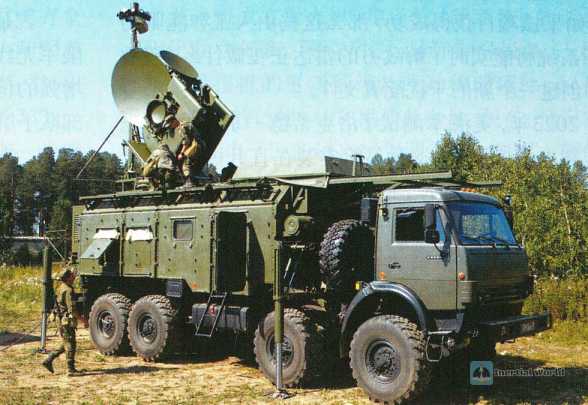
The United States is building an electronic killer that can break the "Digital Iron Dome"
The US military once predicted that if the Third World War breaks out, the winner will be the party that is best at controlling, driving and using the electromagnetic spectrum. This prediction has been verified in several local wars and armed conflicts in recent years. In recent years, in response to the strong momentum of the Russian military in developing unmanned electronic warfare aircraft, the US military has not shown weakness, frequently showing off its muscles in the Asia-Pacific region, demonstrating its electronic warfare capabilities, and strengthening the construction of electronic warfare forces.
Currently, the US military’s electronic warfare equipment mainly includes: AN/ALQ-144 infrared jamming pod, AN/GLQ-3B high-power communication jamming system, EA-6B Prowler electronic jammer, LQ-102 placement jammer, dazzler laser jamming blinding system, AN/ALQ-151 communication jamming system "Quick Fix" I, AN/MLQ-33 communication jamming system, AN/TLQ-15 communication jamming system, EC-130H electronic jamming aircraft, E-8C electronic warfare aircraft, EF-111A electronic warfare aircraft, EA-18G "Growler" electronic warfare aircraft, etc.
In order to adapt to the further development of electronic warfare, in March 2016, the Pentagon’s Defense Advanced Research Projects Agency is working on a new generation of electronic warfare systems based on artificial intelligence. If the project is successful, these new systems driven by artificial intelligence will be able to understand what the enemy’s radar is doing in real time, and then immediately create a new interference profile.
In 2023, the US Navy tested Lockheed Martin’s advanced airborne electronic warfare pod. This pod is installed on a helicopter to detect and deceive anti-ship missiles; improve the "Growler" electronic warfare aircraft produced by Boeing, and the surface electronic warfare improvement program in which General Dynamics, Lockheed Martin and Northrop Grumman participated. In September 2023, a peculiar-looking electronic warfare aircraft joined the US Air Force. Only two months later, the US military changed the aircraft’s number from EC-37B to EA-37B. Some analysts said that although there is only one word difference, this change reflects the role change of the US military’s electronic warfare aircraft: their tasks are no longer limited to intelligence collection and battlefield support, but will use radar antennas to emit high-power electromagnetic waves to burn the opponent’s electronic equipment, thereby achieving "hard kill" capabilities.
The United States has also vigorously strengthened the construction of electronic + drone ("soft + hard") killing integrated combat forces:
The first is the deep-sea electronic warfare force. This force is a professional force established to carry out electronic reconnaissance, electronic countermeasures and electronic interference tasks to ensure that the deep-sea forces carry out operations and complete other tasks. In addition to the traditional logistics support, that is, the logistics support of the deep-sea forces, that is, the support tasks of materials, technology, medical care, transportation, etc., also undertakes tasks such as communication support and hydrological and meteorological support.
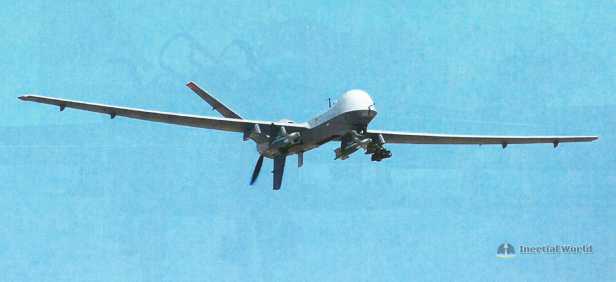
The second is the electronic reconnaissance force. In February 1904, the Russo-Japanese War broke out. A Russian radio operator accidentally discovered that the information about the enhanced radio signals of the Japanese army was a prelude to their attack. Professional electronic reconnaissance forces were born in major European military powers during the First World War. Since then, since the advent of electronic reconnaissance forces, they have repeatedly made remarkable achievements and developed rapidly. In the information battlefield full of various electronic information equipment or systems, in order to seize the right to control information, the US military’s electronic reconnaissance forces are always the first to go into battle. For example, at the beginning of the Gulf crisis, multinational forces organized aerospace, aviation, ground, and maritime electronic reconnaissance forces to establish a full-dimensional, multi-level, and large-scale three-dimensional reconnaissance system. In the Gulf War, the multinational forces led by the United States implemented the "White Snow" operation and seized the "electromagnetic right" from the beginning. In the war, the battlefield of electronic warfare used by multinational forces was extremely vast, and the characteristics of "full time and space, full time domain, full field, and full frequency domain" were vividly reflected. Since then, the gradual improvement of the US space-based electronic reconnaissance system and the emergence of new electronic reconnaissance aircraft and electronic reconnaissance drones will make the electronic reconnaissance forces that have been cultivated for a hundred years even more powerful. As the "vanguard" of information competition between the two hostile parties, they will surely show their prowess in the future information battlefield.

The third is the electronic jamming force. Since the German Navy Fleet Commander Zhu Xiong ordered the interference of the radio communication between the British "Gloucester" cruiser and its superiors in September 1914, he got rid of the encirclement and interception of the British and French navies and directed the first successful use of electronic jamming in the history of war. After that, the electronic jamming force has grown from nothing to something, from small to large, and has developed from amateur players who occasionally "guest-starred" in the early days to a professional electronic jamming force with a large number of people and a full range of categories. The US Army’s electronic warfare forces account for about 2.6% of the total army, and dedicated electronic warfare aircraft account for 5.7% of the total aircraft, 6.5% of the total combat aircraft, and 33% of the total support aircraft. At the same time, the US military also plans to add another electronic warfare aircraft squadron to further improve its information attack capabilities.
The US attack on Iraq can be said to be a high-tech and very intensive electronic warfare. The US military uses powerful electronic warfare forces to conduct air interception of Iraq’s electronic information systems through continuous and high-intensity three-dimensional electronic warfare, causing most of the Iraqi army’s command, control, communication and air defense electronic information systems to be paralyzed, making it difficult to organize an effective counterattack, creating favorable conditions for the US military’s next military strike. In the Kosovo War, the multinational forces first attacked the Southern Army Command and Control Center in Belgrade. In addition, the US military also has radar jamming forces, communication jamming forces, guided jamming forces, anti-radiation destruction forces, etc.
Fourth, space information warfare forces. From January 22 to 26, 2001, the first space war exercise conducted by the US Air Force at the Space Operations Center in Colorado attracted widespread attention from countries around the world. In this regard, many experts pointed out that this exercise was a space war on the surface, but in fact it was an information war with space as the main battlefield. Its core content was to compete for strategic information advantages, and its basic feature was a network-electronic integrated war that combined network warfare and electronic warfare.
The fifth is to establish an integrated joint force of drones + electronic warfare (hard kill + soft kill). The update of air defense radars, missile guidance equipment, jammers and even transmitters involves modifying physical hardware, which is a laborious and time-consuming process that often takes several months. Now, the situation has changed fundamentally. Electronic equipment increasingly emphasizes "software definition", and the hardware part is highly versatile. Users can tell the device what to do through algorithms and change its operating mode in real time. Since loading new functions is as easy as overwriting code, the pace of the arms race has greatly accelerated, and artificial intelligence has become an indispensable helper. Since the EC-130H has "shot down" drones of terrorist organizations in Iraq and Syria by interfering with the control links of drones or using explosive electromagnetic pulses to directly destroy the electronic equipment of drones, the US Department of Defense has begun to invest huge amounts of money in the development of drones, electronic warfare equipment, and the establishment of a force with mixed combat equipment. The US military plans to equip the 350th Wing with electronic warfare drones, unmanned reconnaissance aircraft, etc. to collect data from the front through drones, and then professionals will use artificial intelligence tools to analyze it, figure out how to adjust the electronic countermeasures equipment, generate countermeasures, and then transmit it back to the combat troops. Of course, the most valuable data often comes from F-35 fighters and B-21 bombers. These models are equipped with high-performance sensors and perform high-risk tasks. They can capture high-value data at the first time and send it to the 350th Wing for analysis and research.


